Mary Lee Leads Shark Research to the Jersey Coast
Learn Why You Shouldn't Fear the Fin

“She owns it wherever she goes,” said OCEARCH expedition leader Chris Fischer about Mary Lee, the 16-foot, 3,456-pound white shark tagged off Cape Cod in September 2012. As one of the first mature female white sharks to be tagged, she’s leading scientists and ocean enthusiasts on a journey revealing the mysterious lifestyle of a 400 million-year-old species.
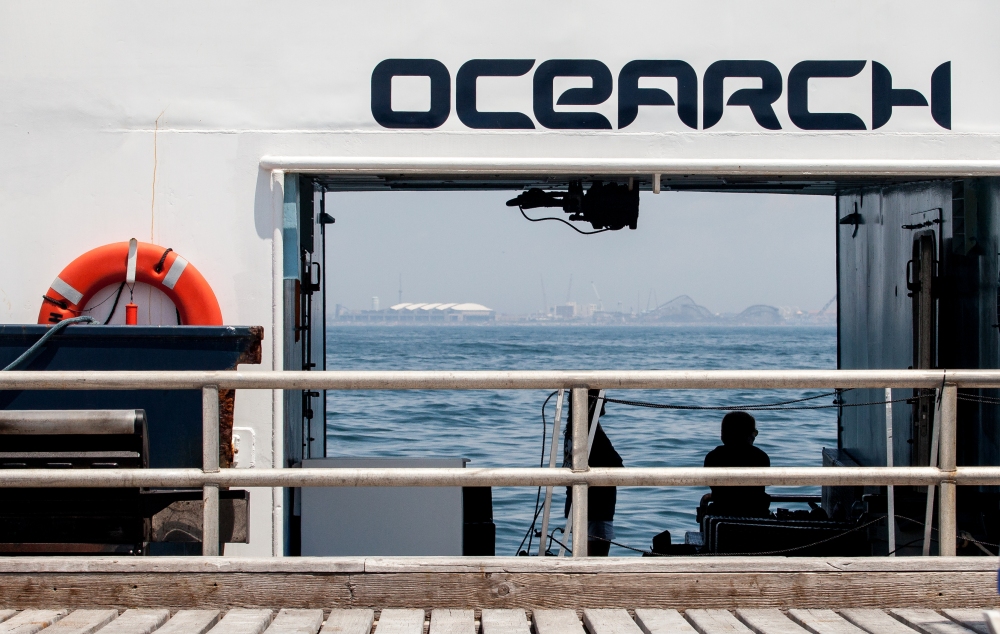 The M/V OCEARCH anchored off the Wildwood coastline with the Morey’s Piers amusements visible in the distance.
The M/V OCEARCH anchored off the Wildwood coastline with the Morey’s Piers amusements visible in the distance.
Mary Lee, as well as Katherine, Lydia and Manhattan, have pinged along the Mid-Atlantic Coast for the past few years, showing researchers that there’s an allure to this shore. OCEARCH’s 29th expedition, held June 23-July 13, leveraged this region to explore what draws them to these waters.
“Mary Lee is hitting events on a calendar year after year accurately,” Fischer explained.
Her schedule revolves around events such as bluefish blitzes, striped bass runs and seal haul-outs. In the nearly 5 years that she’s been tagged, she’s covered almost 40,000 miles, visible as a connect-the-dots web on the open-source, global shark tracker app and website. A migrating white shark is capable of traveling 100-150 miles in one day. Each time she surfaces and reveals the Smart Position or Temperature (SPOT) tag on her dorsal fin, a signal is transmitted to a satellite and her location is documented as a ping. Each ping adds a new piece to the shark puzzle.
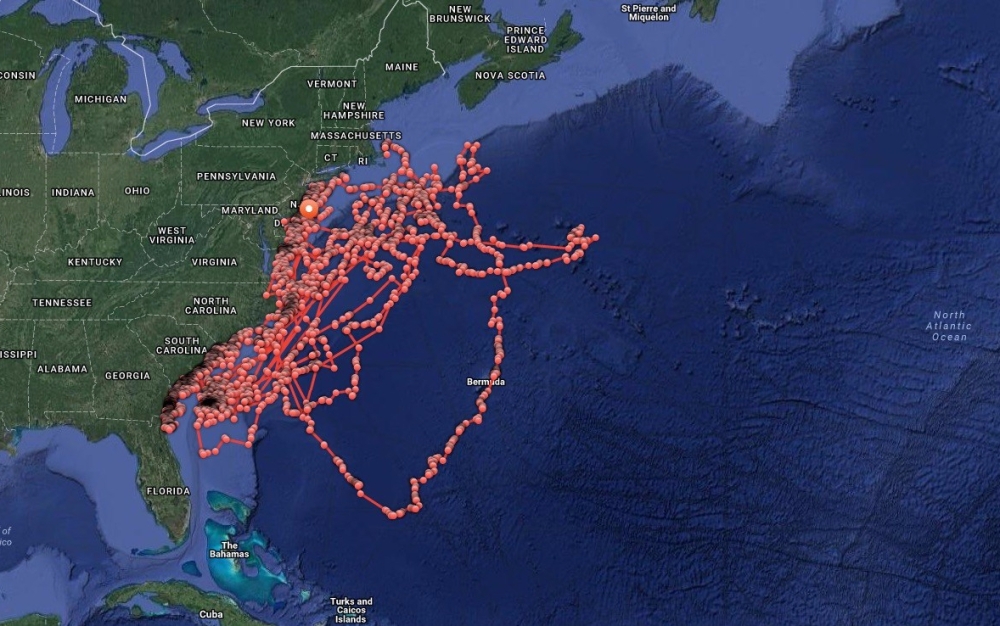 Mary Lee’s pings on the global shark tracker website and app show where she’s been swimming since being tagged in 2012.
Mary Lee’s pings on the global shark tracker website and app show where she’s been swimming since being tagged in 2012.
Cape Cod and Nantucket have been identified as mating grounds in the fall, and just last summer, OCEARCH tagged nine white shark pups off Montauk, New York, identifying a birthing area. New Jersey is a special place because it’s part of the Mid-Atlantic nursery where sharks grow up, Fischer explained, and we are about to see an increase here in the white shark population in the near future. He likened the population growth to a hockey stick. We are at the point where “we’re going to start to see a steady increase,” he said.
The End of an Unsustainable Era Gives White Shark Pups a Chance at Survival
The return of the sharks is a story of good management with an unexpected benefit. The practice of stringing together gill-nets to form large-scale drift-nets was banned by the United Nations in 1991, becoming effective in 1993. The policy was initiated to sustain the recreational and commercial fishing industries, together worth about $80 billion to the U.S. economy. Previously, these nets formed an indiscriminating wall of death in the ocean tangling any fish by the gills upon passage through the near invisible mesh openings. Gill-nets make no exceptions for white shark pups, which are about 4.5 feet and 45 pounds. A female white shark reaches maturity at age 20 and has an 18-month gestation, and now, more than 20 years post-ban, a generation of females is ready to give birth to pups that won’t face death traps in their nursery.
Identifying nurseries, mating and birthing areas is critical in protecting sharks and can help inform policy decisions that enable a sustainable future.
“We are ocean people and we’re attacking the shark problem,” said Fischer. Without these apex predators, the balance of a healthy ocean is lost. For example, without sharks, the cownose ray population begins to explode, which leads to the depletion of the shellfish populations that purify water through filter feeding. “Sharks are the wolves of the ocean,” Fischer explained, comparing the shark problem to the disruption of the Yellowstone ecosystem when wolves were eliminated.
The Mid-Atlantic Expedition tagged two sand tiger sharks with acoustic tags off the coast of Delaware and revealed that white sharks are most likely in the Mid-Atlantic earlier in the season (May).
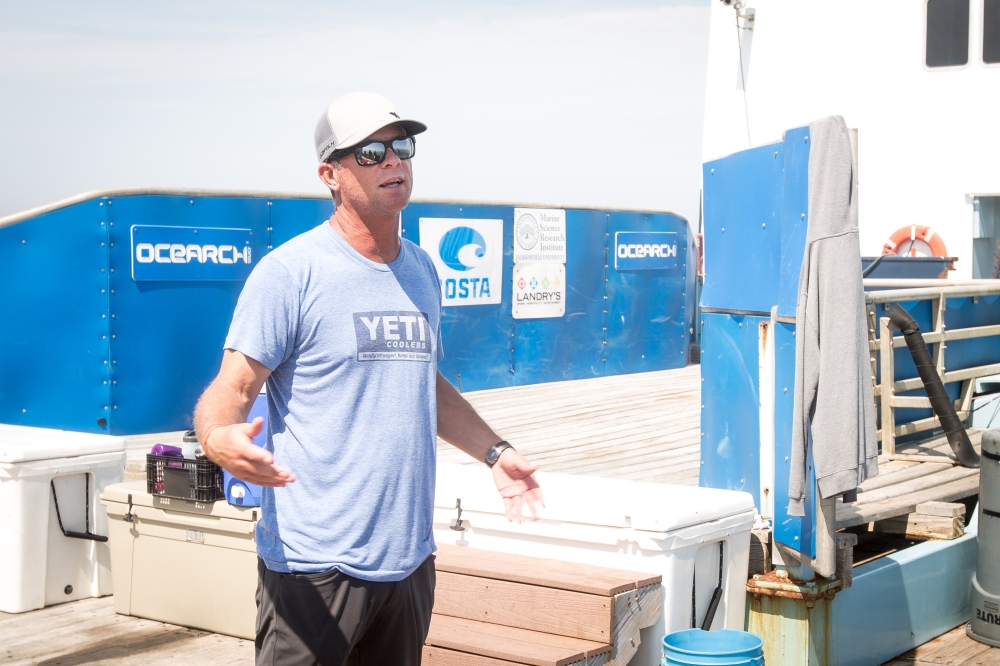 Chris Fischer shares the mission of OCEARCH.
Chris Fischer shares the mission of OCEARCH.
Don’t Fear the Fin
“The idea of Jaws is impossible. If sharks liked humans, no one would swim,” said Fischer. There is an irrational fear that surrounds sharks, despite how little they want to do with us, he explained.
“Don’t ride a tractor. And you better put on a seat belt driving to the beach,” he said, noting the various activities that we are more likely to die from than a shark attack.
Even toasters in the kitchen are more deadly, killing more people annually than sharks.
Sharks kill about a dozen humans in one year. On the other hand, humans kill about 100 million sharks in one year. An infographic published by the Huffington Post compares these numbers in a shocking illustration. Shark fin soup, a delicacy with a hefty price tag of up to $100 a bowl, drives the shark fin trade, killing 73 million sharks annually, according to Discovery.
Humans have proven more deadly to sharks than they are to us.
Collaborating to Correct the Data Deficit
Watermen have practical knowledge only achieved from working on the water for extended periods of time. Researchers have academic knowledge and experience using the scientific process. OCEARCH “brings those worlds together to chase science,” said Fischer.
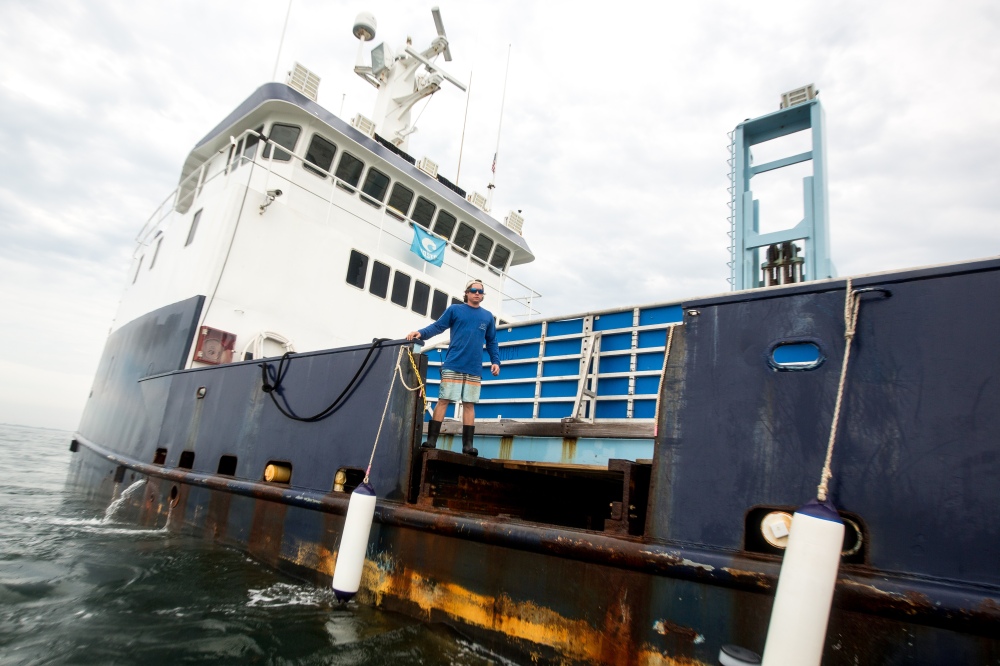 DJ Lettieri welcomes guests including news reporters, local beverage distributors and photographers who came aboard to help share the OCEARCH story with their communities.
DJ Lettieri welcomes guests including news reporters, local beverage distributors and photographers who came aboard to help share the OCEARCH story with their communities.
Barriers are broken, speeding up discoveries, as the silo approach becomes a collaborative environment. OCEARCH’s data is available worldwide to anyone with internet access, encouraging researchers, citizen scientists, students and ocean enthusiasts to get involved in protecting the oceans that make up 70 percent of our planet.
OCEARCH has partnered with a number of eco-conscious brands that help to fund research expeditions. Without sharks in the ocean, you wouldn’t need polarized sunglasses to see fish and you wouldn’t need to pack a cooler with ice before a fishing trip. “Costa and YETI are brands that get it,” said Fischer.
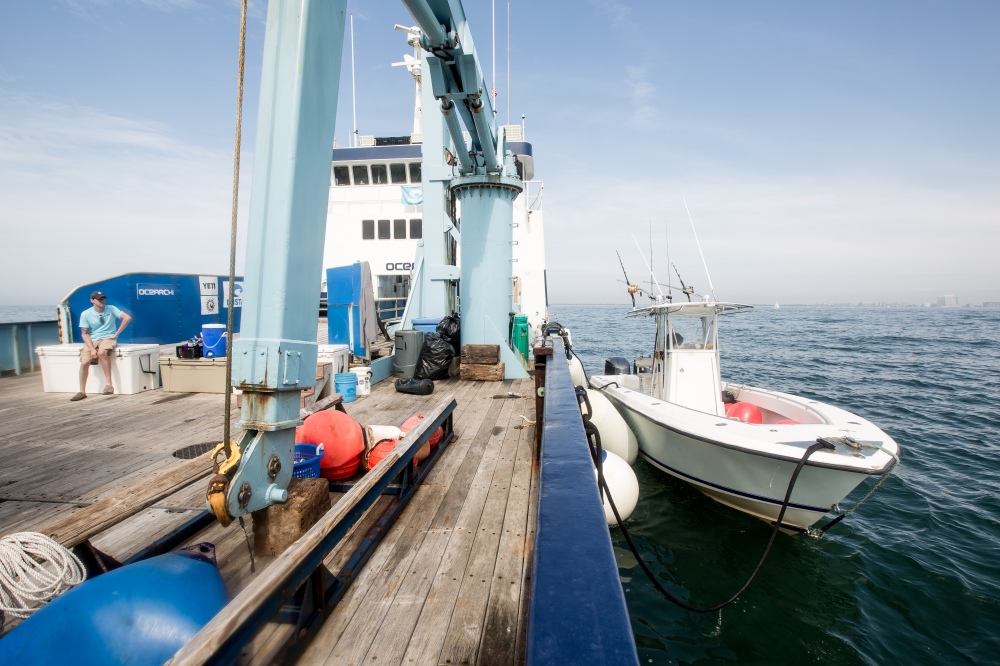
Crabbing Vessel Turned At-Sea Laboratory
The M/V OCEARCH, a former Bering Sea king crab vessel, now uses a hydraulic platform to safely lift sharks out of the ocean, giving researchers access to the predators they are trying to learn about and protect.
In just 15 minutes on the platform, collaborating scientists conduct 12 studies that include a blood sample, fin clip, ultrasound or semen sample, muscle biopsy, body measurements, parasite collection and tagging. The shark remains calm as a damp towel covers its eyes and water flows into its mouth from a pipe allowing it to breath.
After a past of taking from the sea, the vessel is now giving back, said Fischer.
Follow Mary Lee and the dozens of other sharks that have been tagged by visiting http://www.ocearch.org
We want to acknowledge and thank the past, present, and future generations of all Native Nations and Indigenous Peoples whose ancestral lands we travel, explore, and play on. Always practice Leave No Trace ethics on your adventures and follow local regulations. Please explore responsibly!
Do you love the outdoors?
Yep, us too. That's why we send you the best local adventures, stories, and expert advice, right to your inbox.


